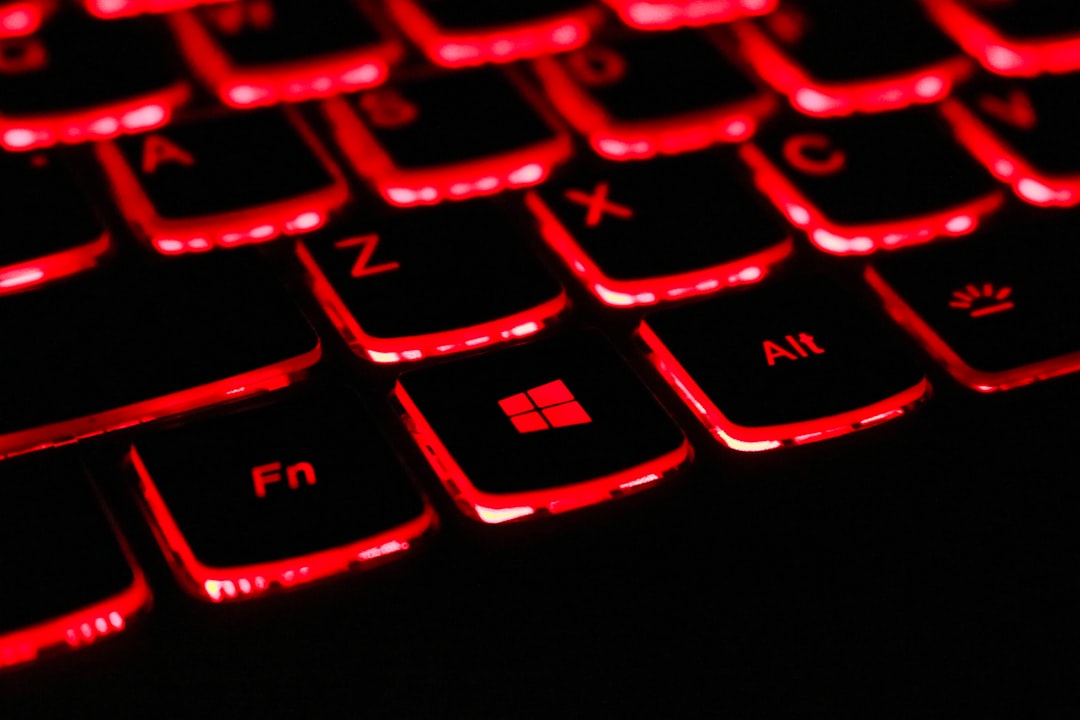Healthcare IT Pros: Phishing Breach vs. Data Security
Discover how multiple US cancer centers were targeted in a phishing breach and learn how to bolster your organization’s data security today.
Overview of Phishing Breach Incident
Incident Description
In a concerning development, multiple cancer centers across the United States have fallen victim to a coordinated phishing breach. This incident has raised alarms within the healthcare sector due to the sensitive nature of the data involved.
Phishing, a form of cyberattack where attackers impersonate legitimate entities to deceive individuals into revealing confidential information, has been the method of choice in this breach.
Scope and Impact
The breach has affected several prominent cancer centers, compromising patient data, including personal identification information and medical records. The coordinated nature of the attack suggests a high level of sophistication and planning, indicating that the attackers may have had specific targets within these institutions.
The impact of this breach is significant, not only due to potential identity theft but also because of the sensitive health information that could be exploited.
Response and Mitigation
Upon discovery of the breach, the affected cancer centers have initiated their incident response protocols. This includes isolating compromised systems, notifying affected individuals, and collaborating with cybersecurity experts to contain the breach.
The centers are also working with law enforcement agencies to track down the perpetrators and prevent further incidents. Additionally, they are enhancing their cybersecurity measures, including employee training on recognizing phishing attempts and implementing more robust email security solutions.
Lessons Learned
This incident underscores the critical importance of cybersecurity in the healthcare sector.
It highlights the need for continuous vigilance and the implementation of comprehensive security measures to protect sensitive data. Organizations are reminded of the importance of regular cybersecurity training for employees, as human error remains a significant vulnerability in phishing attacks.
Furthermore, this breach serves as a wake-up call for healthcare institutions to evaluate and strengthen their existing security frameworks to prevent future incidents.
Impact on Affected Cancer Centers
Operational Disruptions
The coordinated phishing breach has led to significant operational disruptions in the affected cancer centers. Critical systems, including patient management and scheduling software, were compromised, causing delays in treatment schedules.
As a result, both patients and healthcare providers faced challenges in maintaining continuity of care.
Moreover, the breach has necessitated the temporary shutdown of certain digital services to contain the threat, further exacerbating the disruption. This has forced many centers to revert to manual processes, increasing the workload for administrative staff and reducing overall efficiency.
Data Security Concerns
One of the most pressing issues resulting from the phishing breach is the compromise of sensitive patient data.
Personal health information, including treatment histories and personal identifiers, may have been accessed by unauthorized parties. This breach of confidentiality not only violates patient privacy but also poses a risk for identity theft and fraud.
In response, affected cancer centers are undertaking comprehensive audits to assess the extent of the data breach.
They are also enhancing their cybersecurity measures to prevent future incidents, which involves significant financial and resource investment.
Financial Implications
The financial impact of the breach is substantial. Cancer centers are incurring costs related to system recovery, cybersecurity enhancements, and potential legal liabilities.
Additionally, the disruption in services can lead to a loss of revenue, as patient appointments and procedures are delayed or canceled.
Insurance premiums for cyber liability may also increase as a result of the breach, adding to the long-term financial burden on these institutions. Furthermore, the potential for fines and penalties from regulatory bodies, if found non-compliant with data protection laws, could further strain their financial resources.
Reputation Damage
The breach has also dealt a blow to the reputation of the affected cancer centers.
Trust is a critical component in healthcare, and patients may feel uneasy about the security of their personal information. This could lead to a decline in patient confidence and a potential reduction in patient numbers as individuals seek care from institutions perceived as more secure.
To mitigate reputation damage, cancer centers are actively communicating with patients, providing updates on the situation, and outlining steps being taken to enhance data security.
Transparent communication is essential in rebuilding trust and ensuring patients feel confident in the safety of their personal information.
Response and Mitigation Efforts
Immediate Incident Response
Upon discovering the phishing breach, the affected cancer centers immediately activated their incident response protocols. This involved isolating compromised systems to prevent further unauthorized access and conducting a thorough assessment to determine the extent of the breach.
The IT teams worked around the clock to ensure that all potential vulnerabilities were identified and addressed promptly.
Collaboration with Law Enforcement
The cancer centers collaborated closely with federal law enforcement agencies to investigate the breach. This partnership was crucial in tracing the origins of the phishing attack and understanding the methods used by the perpetrators.
By sharing information with authorities, the centers aimed to aid in the broader effort to track down and prosecute those responsible for the cyberattack.
Strengthening Cybersecurity Measures
In response to the breach, the cancer centers reviewed and strengthened their cybersecurity measures. This included updating firewall configurations, enhancing email filtering systems to better detect phishing attempts, and implementing multi-factor authentication across all platforms.
These measures were designed to fortify the centers’ defenses against future attacks.
Staff Training and Awareness
Recognizing the role of human error in phishing attacks, the cancer centers launched comprehensive training programs for their staff. These programs focused on raising awareness about phishing tactics, teaching employees how to recognize suspicious emails, and emphasizing the importance of reporting potential threats immediately.
Regular simulations were also conducted to test staff readiness and response to phishing scenarios.
Communication with Patients and Stakeholders
Transparent communication was a key component of the response strategy. The cancer centers promptly informed patients and stakeholders about the breach, outlining the steps being taken to mitigate its impact.
Regular updates were provided to maintain trust and reassure all parties that their data security was a top priority. The centers also offered resources and support to patients potentially affected by the breach.
Lessons Learned and Future Recommendations
Understanding the Threat Landscape
The recent coordinated phishing breach affecting multiple US cancer centers highlights the evolving sophistication of cyber threats.
Attackers are increasingly targeting healthcare institutions due to the sensitive nature of the data they hold. This incident underscores the necessity for healthcare organizations to stay informed about the latest phishing tactics and to continuously update their threat intelligence capabilities.
Importance of Employee Training
One of the critical lessons learned from the breach is the significant role that employees play in the security chain.
Phishing attacks often exploit human vulnerabilities, making it imperative for cancer centers to invest in comprehensive cybersecurity training programs. Regular workshops and simulated phishing exercises can help staff recognize malicious emails and respond appropriately, thereby reducing the likelihood of successful breaches.
Enhancing Technical Defenses
While human factors are crucial, technical defenses must not be overlooked.
Implementing advanced email filtering solutions and multi-factor authentication can significantly mitigate the risk of phishing attacks. Additionally, maintaining up-to-date software and conducting regular security audits can help identify and address vulnerabilities before they are exploited by attackers.
Collaboration and Information Sharing
The breach also emphasizes the importance of collaboration between healthcare institutions.
Sharing information about phishing attempts and successful breaches can help other organizations recognize and prepare for similar threats. Establishing a network for real-time information exchange can enhance collective security and resilience against coordinated attacks.
Developing a Response Plan
In the event of a breach, having a well-defined incident response plan is crucial.
This plan should include procedures for identifying, containing, and mitigating the impact of an attack. Regularly testing and updating the response plan ensures that all stakeholders are prepared to act swiftly and effectively, minimizing potential damage.
Investing in Cybersecurity Resources
Finally, the breach highlights the need for increased investment in cybersecurity resources.
Allocating sufficient budget for both technological and human resources can strengthen an organization’s overall security posture. By prioritizing cybersecurity, cancer centers can better protect their sensitive data and maintain trust with patients and stakeholders.
FAQ
Q1: Who should be concerned about the phishing breach at multiple US cancer centers?
A1: This breach primarily affects patients, healthcare providers, and employees associated with the impacted cancer centers. Patients should be vigilant about any communications they receive from their healthcare providers and ensure they verify the authenticity of any requests for personal information. Healthcare providers and employees should be aware of the increased risk of phishing attempts and take necessary precautions to protect sensitive data. Additionally, individuals involved in healthcare IT and cybersecurity should pay attention to this breach to understand the tactics used and enhance their security measures accordingly.
Q2: How does this phishing breach affect compatibility with other devices or software used by patients and healthcare providers?
A2: The phishing breach itself does not directly impact the compatibility of devices or software. However, it may lead to compromised credentials or unauthorized access to systems, which could affect the functionality or security of healthcare-related software and devices. Patients and healthcare providers should ensure that their devices and software are updated with the latest security patches and that they use secure and verified applications to access medical records or communicate with healthcare centers.
Q3: When should affected individuals consider upgrading their security measures, and are there better alternatives to current practices?
A3: Affected individuals should consider upgrading their security measures immediately upon learning about the breach. This includes updating passwords, enabling two-factor authentication, and using secure communication channels. Regularly educating oneself and staff about the latest phishing tactics and cybersecurity best practices is crucial. As for alternatives, individuals and organizations can explore advanced security solutions such as endpoint protection platforms, intrusion detection systems, and secure email gateways to enhance their defenses against future breaches.
Takeaway
Hey there tech enthusiast! 🚀 Looking to make an informed decision on your next gadget purchase? Dive into our hands-on product reviews to get a real feel for what these devices can do for you. We’ve done the research so you don’t have to!
Interested in comparing specs to find the perfect fit for your needs? Our detailed comparisons of similar gadgets will help you narrow down your choices and find the best match for you.
Ready to take the next step towards your tech upgrade? Visit the official site for more details and make a confident decision. Your new favorite gadget is just a click away! 🌟











Comments